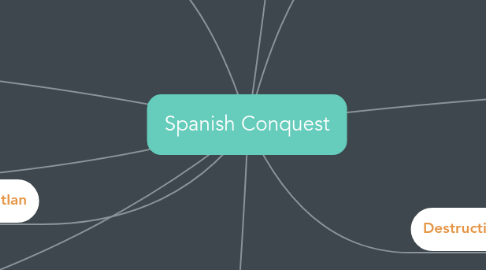
1. Cortes began his siege of Tenochtitlan in 1521, his plan was to cut off the city’s supplies by disconnecting it from the mainland and forcing the Aztecs to submit. Cortes demonstrated dominance through his cannons and weapons, which the Aztecs thought they fought with no honour. The two natives disagreed with one another and Cortes had travelled to other city-states (Tlaxcala and Cholula) to build an alliance to annihilate the Aztecs.
1.1. The short-term effect of The Siege of Tenochtitlan was their community being effected by smallpox which weakened their army and gave the Spaniards an open door to conquering Tenochtitlan.
2. The long-term effect of The Siege was their food supplies were cut off and trapped within their walls while the Spaniards and Tlaxcala’s waited for three months for them to come out.
3. Siege began three months before the destruction of Tenochtitlan
4. People people died from diseases and during that time period the Spanish conquers the Aztecs
5. They both involved in transferring diseases in both the new world and the old world.
6. Siege of Tenochtitlan
7. Colombian Exchange
7.1. The Columbian exchanged with people from Europe migrating to the Americas, technology innovation, and cultural exchanges. After 1492 the European migrated to the Americas because of God, gold and glory. European colonizers had a desire to spread Christianity to the New World. The Columbian exchange involved in exchanging slaves, rum, textiles, sugar, tobacco, manufactured goods and a number of diseases.
7.1.1. Short-term effects during the Columbian Exchange were the Spanish conquers the Aztecs, Native Americans die of European diseases, enslaved Africans are brought to the Americas and American foods are introduced.
7.1.2. Some long-term effects were the spread of products, population growth in Europe and Africa, cultural diffusion and migration from Europe to the Americas.
8. The Spread of smallpox allowed an advantage for the Spanish to conquer Tenochtitlan
9. Spread of Diseases
9.1. As the Spaniards entered Tenochtitlan in 1519, the Aztecs were introduced to numerous diseases they have never interacted with before. This meant they had no immunity to diseases that were common in Europe. So when these diseases accompanied the conquistadors to the Americas, the outbreaks among the Mexica’s were decreased severely. They had a major breakout of smallpox in the 1520s, measles in 1531 to 1532, influenza in 1545 and 1576, as well as the spread of the plague.
9.1.1. The short-term effects of diseases were the Aztecs were unfamiliar with them and weren’t often exposed to these diseases in the Americas
9.1.2. The long-term effects of diseases were many native Americans died because of the spread of diseases. It was estimated 90% of Native Americans died from diseases.
10. Destruction of Tenochtitlan
10.1. The Destruction of Tenochtitlan begun in 1521 when Hernan Cortes began gathering different city-states around Tenochtitlan. Cortes knew the Aztecs were weakened by the spread of smallpox and was quick to attack while they were weakened. They began a siege around Tenochtitlan and cut off all supplies until after three months they overcame the siege. Cortes was planning to preserve the land and offer it the Spanish King but the Spanish bombarded the country with cannons. The cannons destroyed temples, pyramids and palaces.
10.1.1. The smallpox affected them when the Spaniards designated in the Americas.
